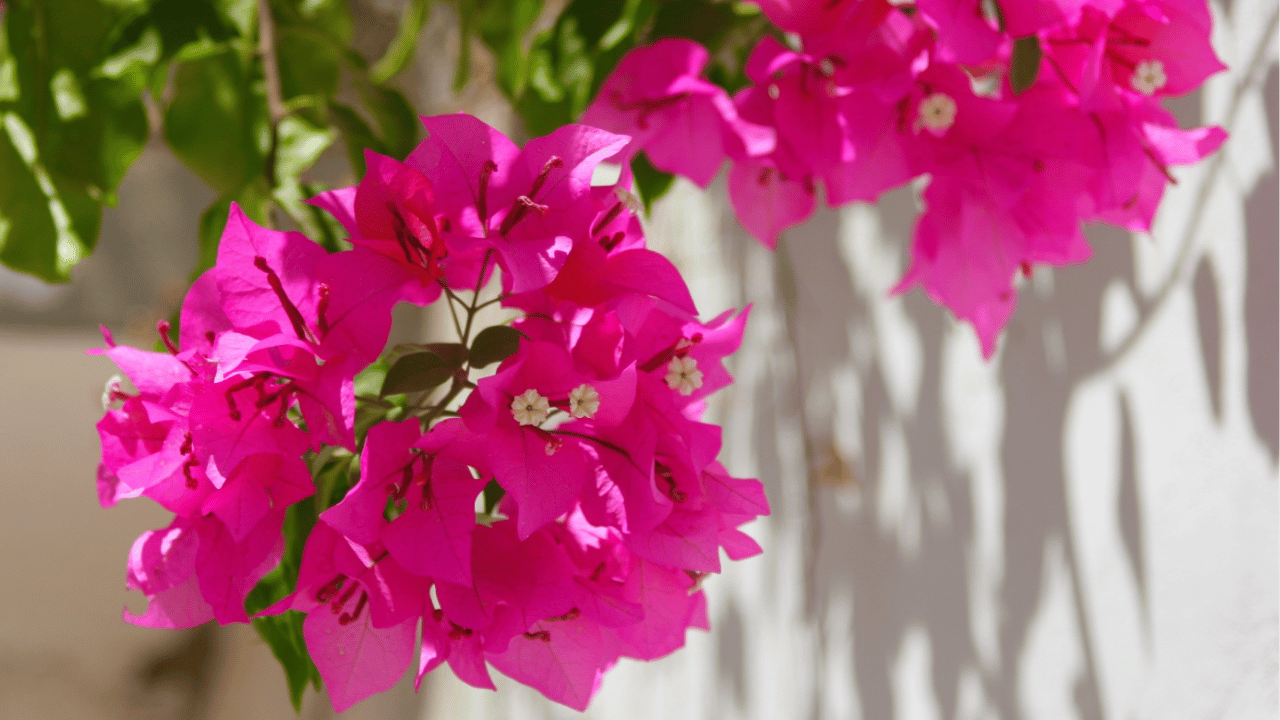Bougainvillea, with its vibrant, cascading blooms, can be a stunning addition to any garden. However, these striking plants require proper care to thrive. While they’re relatively hardy, providing the right conditions and attention can ensure they flourish year-round. Below are 10 essential care tips that can help even experienced gardeners get the most out of their bougainvillea.
1. Provide Full Sun Exposure
Bougainvillea thrives in full sun, needing at least five to six hours of direct sunlight each day. While they can tolerate partial shade, insufficient sunlight will reduce blooming significantly, leading to more foliage than flowers. Be sure to position your plant where it can bask in as much sun as possible.
When planning your garden layout, avoid placing bougainvillea in areas shaded by larger plants or structures. Shaded areas can stunt their growth, and even a small reduction in light can cause them to underperform in terms of flowering.
2. Choose Well-Draining Soil
Bougainvillea prefers well-draining soil with a slightly acidic pH, around 5.5 to 6.0. If planted in soil that retains too much moisture, these plants are prone to root rot, which can be fatal. Use a mix of garden soil, sand, and organic matter to create the ideal medium for growth.
To enhance drainage further, consider planting in raised beds or pots with drainage holes. This not only prevents waterlogging but also allows you to manage soil conditions more easily, especially in areas with heavy rainfall.
3. Water Sparingly but Consistently
Bougainvillea is drought-tolerant and prefers to dry out between waterings. Overwatering is one of the most common mistakes, as it can cause root rot or inhibit blooming. Water deeply, but only when the top few inches of soil feel dry to the touch.
During the growing season, a slightly more frequent watering routine can encourage healthy development, but be cautious of overwatering in cooler months when the plant’s needs decrease. Always prioritize deep, infrequent watering over shallow, frequent irrigation.
4. Prune Regularly for Shape and Health
Regular pruning helps maintain the shape of bougainvillea and promotes new growth, leading to fuller and more vibrant plants. After a flowering cycle, prune back weak or crowded branches to encourage air circulation and sunlight penetration.
Cut back about one-third of the growth during pruning to keep the plant manageable. Use clean, sharp shears to avoid damaging the plant and remember to remove dead or diseased wood immediately to prevent the spread of any issues.
5. Fertilize with Care
Bougainvillea benefits from balanced fertilization, but too much nitrogen can promote leafy growth at the expense of blooms. Use a fertilizer that is high in phosphorus and potassium, as these nutrients support flower production. Apply it sparingly once a month during the growing season.
Organic options, such as compost or manure, can also provide the nutrients bougainvillea needs without the risk of chemical build-up. Always follow the manufacturer’s recommendations to avoid over-fertilization, which can do more harm than good.
6. Use Proper Mulching Techniques
Mulching helps retain soil moisture and reduces weed competition, but it’s essential to apply it correctly for bougainvillea. Keep the mulch layer thin and spread it a few inches away from the plant’s base to prevent moisture build-up near the roots, which can lead to rot.
Organic mulches like wood chips or straw work well, but they need to be refreshed periodically. Mulching is particularly helpful in hotter climates where moisture retention is crucial during dry periods, but don’t let it become a barrier for the plant’s roots to breathe.
7. Protect from Frost and Cold Weather
Bougainvillea is sensitive to frost and cold temperatures. In regions where temperatures drop below 40°F (4°C), it’s vital to provide protection. Consider covering the plant with frost cloths or moving container-grown plants indoors during cold spells.
Alternatively, growing bougainvillea in pots makes it easier to transport them to warmer, sheltered locations when needed. If outdoor protection isn’t feasible, prune the plant back hard and cover it with a thick layer of mulch to insulate the roots.
8. Provide Support for Climbing Varieties
Bougainvillea is a vigorous climber, and climbing varieties benefit from strong support structures like trellises, fences, or pergolas. Without adequate support, these plants can become sprawling and unruly, potentially damaging themselves or nearby plants.
Ensure the support structure is robust and can handle the weight of a mature bougainvillea. Tie the branches gently to the structure to guide their growth, but be careful not to tie too tightly, as this can damage the stems.
9. Manage Pests and Diseases
Bougainvillea is generally pest-resistant, but it can occasionally attract aphids, mealybugs, and caterpillars. Regularly inspect your plant for signs of pests, such as yellowing leaves, wilting, or visible insects. Treat infestations early using insecticidal soap or neem oil to avoid significant damage.
Fungal diseases can also affect bougainvillea, particularly if overwatered. Ensure proper airflow around the plant and avoid wetting the foliage during watering to minimize the risk of disease. Regular pruning and appropriate watering practices are your best defenses against these issues.
10. Train Bougainvillea for Maximum Bloom
Bougainvillea blooms best when slightly root-bound and stressed. To encourage flowering, restrict the plant’s root growth by keeping it slightly pot-bound or limiting the size of the planting hole. This method signals the plant to focus on blooming rather than expanding its roots.
Avoid repotting or replanting bougainvillea too frequently, as they prefer stable conditions once established. Stressing the plant in this controlled manner is a strategic way to boost flower production and ensure you get those beautiful, vibrant blooms year after year.

